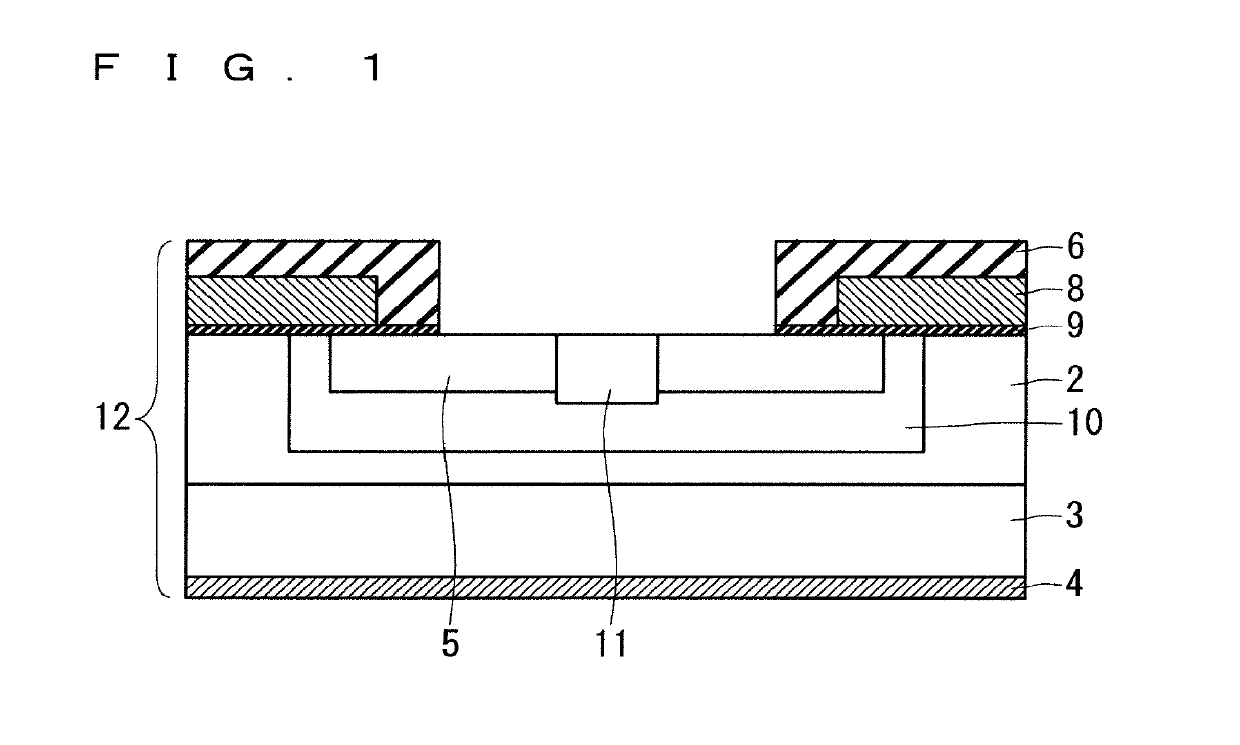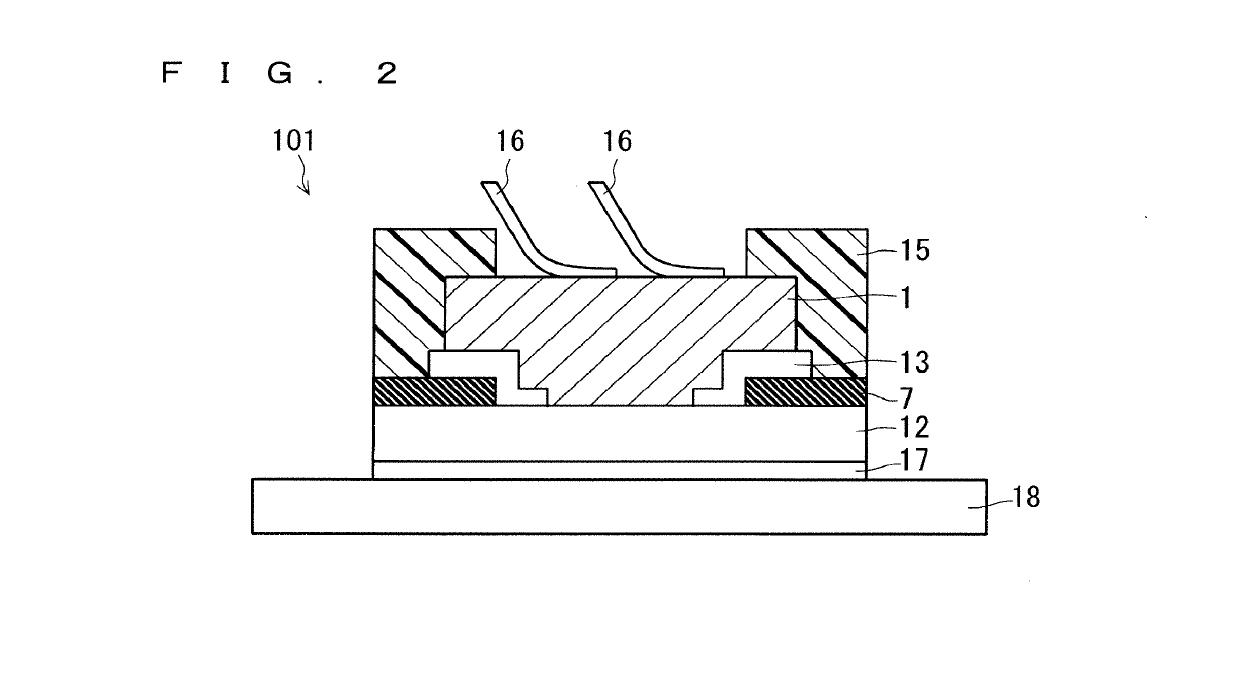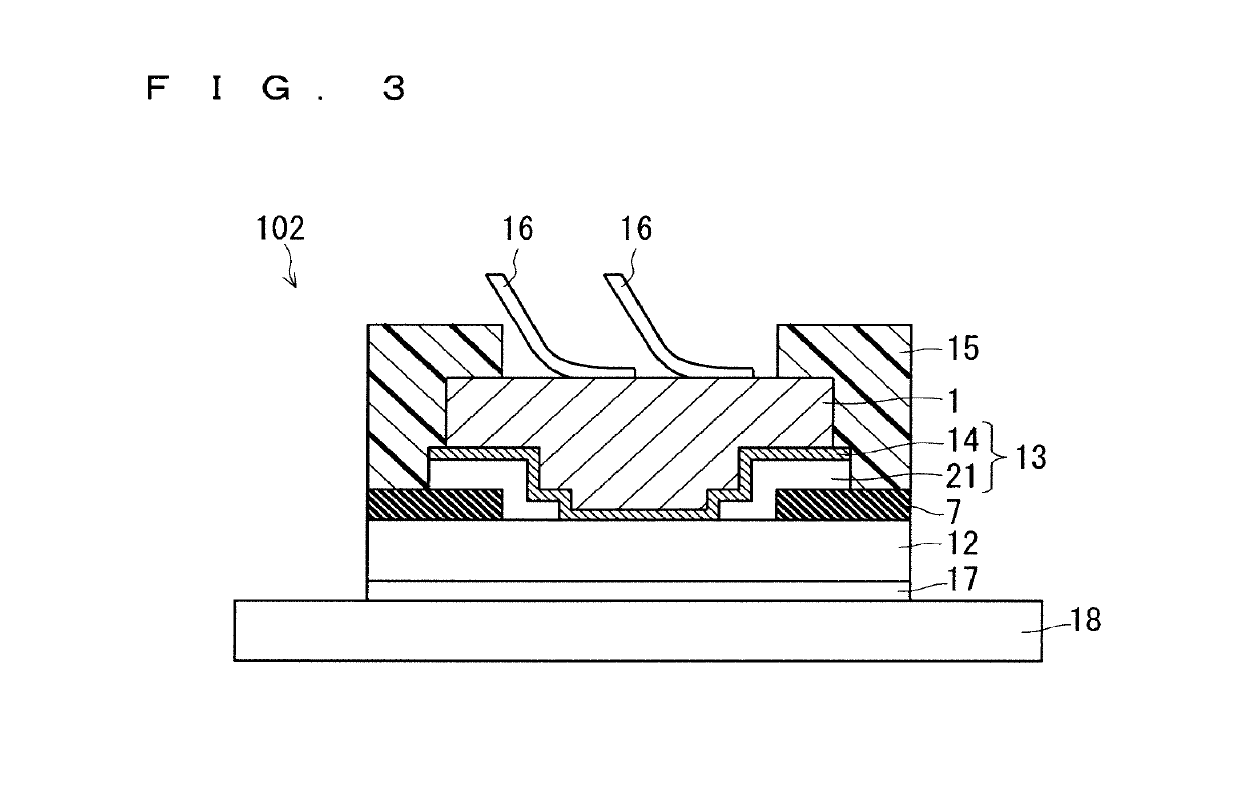Semiconductor device
- Summary
- Abstract
- Description
- Claims
- Application Information
AI Technical Summary
Benefits of technology
Problems solved by technology
Method used
Image
Examples
embodiment 1
A. Embodiment 1
[0019]
[0020]FIG. 1 is a cross-sectional view illustrating a configuration of a power semiconductor element according to Embodiment 1. Hereinafter, the configuration of the power semiconductor element 12 will be described. For a substrate of the power semiconductor element 12, a SiC substrate 3 is used, and an element structure is formed thereon. If the SiC substrate is used, a low-loss semiconductor element capable of a high speed operation and a high-temperature operation as compared with the conventionally used Si substrate can be fabricated. In FIG. 1, the power semiconductor element 12 is shown as a Metal-Oxide-Semiconductor Field-Effect-Transistor (MOSFET).
[0021]On the surface side of the SiC substrate 3, a drift layer 2 is formed by epitaxial growth, and a rear surface electrode 4 electrically connected to the SiC substrate 3 is formed on the rear surface side thereof. On the surface layer of the drift layer 2, a base region 10 is partially formed, and a source ...
embodiment 2
B. Embodiment 2
[0044]
[0045]FIG. 4 is a cross-sectional view illustrating a configuration of a semiconductor device 103 according to Embodiment 2. The semiconductor device 103 is similar to the semiconductor device 102 in that a part of the stress relieving layer 13 is formed of the barrier metal layer 14 having a higher fracture toughness value than the interlayer insulating film 7 made of SiO2, however, the semiconductor device 103 differs from the semiconductor device 102 in that the barrier metal layer 14 is provided between the interlayer insulating film 7 and the non-barrier metal stress relieving layer 21. Apart from the above, the configuration of the semiconductor device 103 is similar to that of the semiconductor device 102.
[0046]In the semiconductor device 102, the barrier metal layer 14 is provided between the Cu electrode 1 and the non-barrier metal stress relieving layer 21 so that Cu of the Cu electrode does not diffuse in the stress relieving layer 13. However, when t...
embodiment 3
C. Embodiment 3
[0051]
[0052]FIG. 5 is a cross-sectional view illustrating a configuration of a semiconductor device 104 according to Embodiment 3. In Embodiment 1 and Embodiment 2, the stress relieving layer 13 has an opening portion on the opening portion of the interlayer insulating film 7, and the Cu electrode 1 and the source region 5 of the power semiconductor element 12 are electrically connected through the opening portion of the stress relieving layer 13. Meanwhile, in Embodiment 3, the configuration is that the stress relieving layer 13 is formed all over the lower side of Cu electrode 1, over from the opening portion of the interlayer insulating film 7 to above the interlayer insulating film 7. Even with such a structure, by forming the stress relieving layer 13 with an electric conductor, the Cu electrode 1 electrically connected to the source region 5 of the power semiconductor element 12 at the opening portion of the interlayer insulating film 7, through the stress relie...
PUM
 Login to View More
Login to View More Abstract
Description
Claims
Application Information
 Login to View More
Login to View More - R&D
- Intellectual Property
- Life Sciences
- Materials
- Tech Scout
- Unparalleled Data Quality
- Higher Quality Content
- 60% Fewer Hallucinations
Browse by: Latest US Patents, China's latest patents, Technical Efficacy Thesaurus, Application Domain, Technology Topic, Popular Technical Reports.
© 2025 PatSnap. All rights reserved.Legal|Privacy policy|Modern Slavery Act Transparency Statement|Sitemap|About US| Contact US: help@patsnap.com



